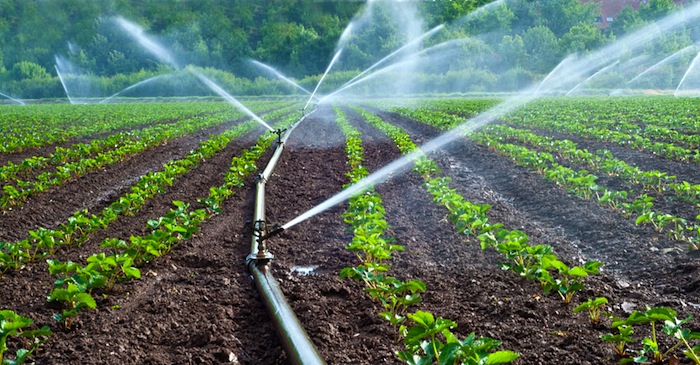Irrigation push stabilizes CPI and local duration
Tanzania’s resilience drive targets lower CPI variance and tighter local duration, as KC=F and CT=F stabilise export cycles, XAUUSD supports reserves, and reduced seasonality eases pressure on TZS=X despite DXY strength.

Tanzania’s climate-proofing turn in agriculture is a macro signal, not a headline exercise. Agriculture contributed about 25.0% of GDP in calendar 2024 and remains the largest employer at roughly 65% of the labour force in 2023. Annual headline inflation printed 3.4% in September 2025, with core at 2.2%, while the Bank of Tanzania set the central bank rate at 5.75% for the quarter ending September 2025, consistent with a 3–5% inflation objective. The policy focus—irrigation expansion, stress-tolerant seeds, soil-health practices, and weather-index insurance—aims to convert climate volatility into a managed operating parameter, compressing food-price variance and stabilising growth.
The mechanism is concrete. Irrigation dampens yield volatility in cereals and roots, tightening the distribution of food CPI outcomes and limiting exchange-rate pass-through. The National Irrigation Commission reported about 727,281 hectares under irrigation in 2022, roughly 2.5% of assessed potential. A 2025/26 programme to drill 500 wells targets an incremental 30,393 hectares, while the 2023–2028 plan seeks to lift irrigated area to around 1.67 million hectares by 2028 through new dams, schemes, and private delivery.
Fertiliser application reached 20.7 kg per hectare in 2023, below Kenya’s 50.5 kg and near the sub-Saharan average of roughly 22 kg, implying scope for non-inflationary productivity gains. As on-farm water control and input intensity raise trend yields, import needs for staples fall during poor rainfall years, reducing pressure on TZS=X and narrowing the seasonal wedge between food and core inflation.
Macro transmission follows. With food carrying the heaviest CPI weight, a tighter range of monthly prints increases the probability that inflation remains within 3.0–4.0% through 2026 harvest cycles. A more predictable CPI path supports steadier policy-rate guidance and lowers the volatility premium in the interbank corridor. Local-currency duration should reflect this shift. Accepted coupon rates on government bonds in late Q3–Q4 2025 clustered near 13.5% for the 10-year line, around 14.0% for 20-year, and 13.75–15.00% for 25-year reopenings. If adaptation measurably trims food-price spikes and FX seasonality, investors will discount fewer adverse tails and demand smaller term premia; a 50–100 basis-point compression at 10–20 years by end-2027 is achievable without loosening real policy.
External accounts and commodities reinforce the adjustment. Stabilised coffee and cotton volumes moderate earnings swings against KC=F and CT=F, while high gold receipts—underpinned by XAUUSD strength—support reserves. Foreign-exchange reserves stood near USD 6.7 billion at end-September 2025, covering more than five months of projected imports. Lower emergency food imports during drought years reduce unplanned fiscal outlays and ease USD demand, improving reserve cover and smoothing exchange-rate seasonality. Reduced FX volatility limits pass-through from DXY strength, keeping CPI within target bands even as the dollar cycle tightens.
Capital formation is the credibility hinge. Irrigation requires multi-year capex in conveyance, storage, and on-farm efficiency; index insurance needs actuarial depth and remote-sensing integration to price at scale; input finance depends on predictable cash flows and enforceable contracts. Blended structures can lower the weighted cost of capital where concessional windows de-risk early assets and private operators manage O&M.
With agriculture near one quarter of GDP, a conservative 5% yield uplift on newly irrigated hectares translates into measurable basis-point gains in real GDP growth, multiplied through logistics, input manufacturing, and processing employment. The fiscal multiplier for resilient infrastructure typically exceeds one in low-leakage contexts, supporting primary balance consolidation without austerity.
The market test is measurement, not narrative. By June 2027, irrigated area should reach at least 1.3 million hectares on a credible ramp toward the 2028 target; fertiliser intensity should rise to 25–30 kg/ha; and weather-index coverage should extend to at least 25% of eligible smallholders. Inflation should print inside a 3.0–4.0% band through seasonal peaks, with food-core spreads narrower than the 2022–2024 average. In the bond market, average accepted yields at 10–20 years should tighten by 50–100 basis points from H2 2025 levels, conditional on improved CPI stability and reduced FX seasonality.
Externally, a smaller drought-year food import bill and steadier crop receipts should lift reserve cover by 0.5–1.0 months by end-2027. Meeting these thresholds would mark a shift from weather risk to resilience dividend, with tangible effects across CPI volatility, local duration pricing, and the shilling’s seasonal profile.





